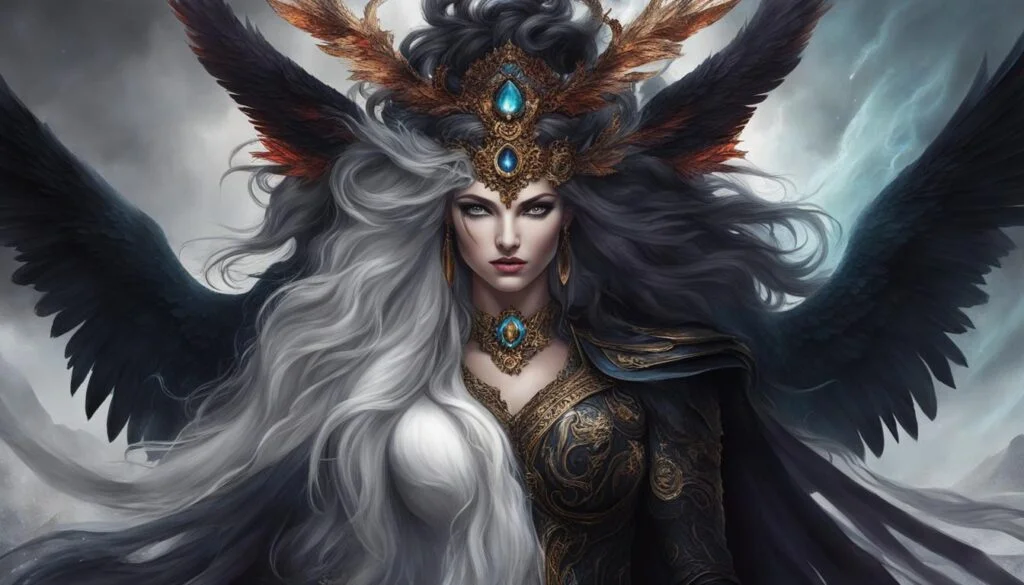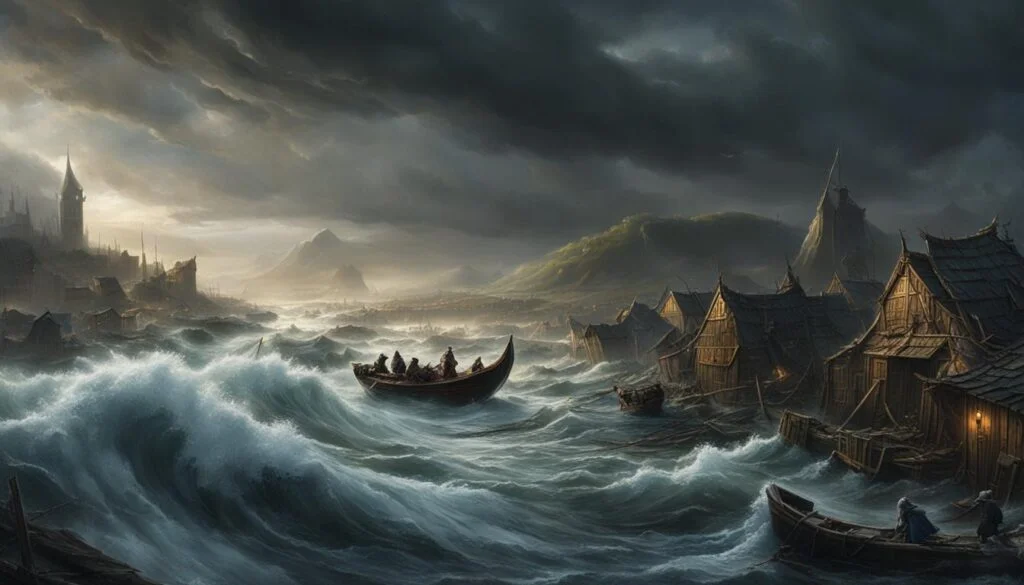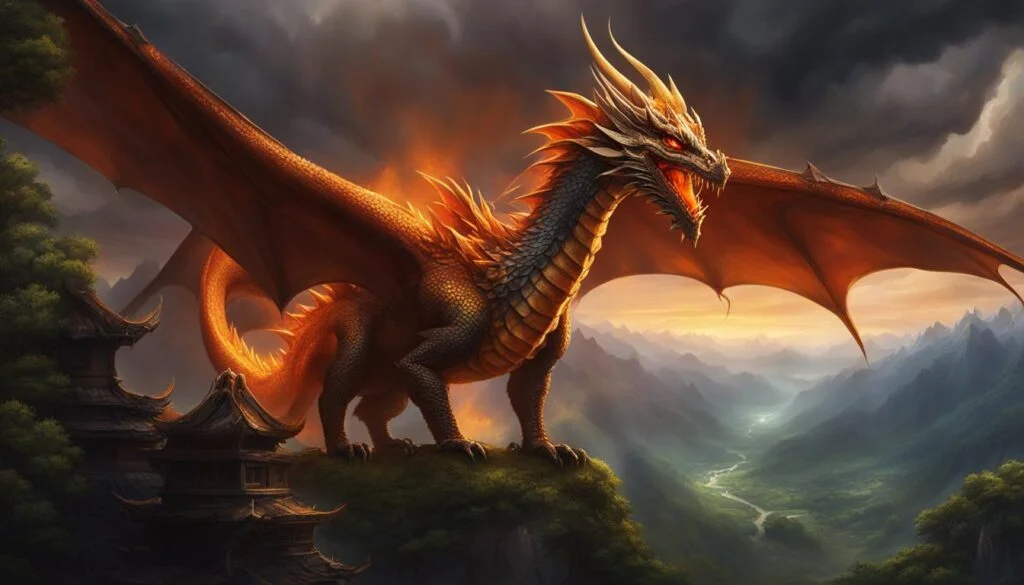In Norse mythology, Hel is a fascinating and enigmatic figure. As the ancient goddess of death and the ruler of the underworld, her role is both feared and respected. But is Hel truly bad, or is there more to her story? Let’s delve into the depths of Norse mythology to uncover the truth about Hel’s nature and significance.
Key Takeaways:
- Hel is the goddess of death and rules over the underworld in Norse mythology.
- She is associated with darkness, disease, and despair, but her appearance is not inherently evil.
- Hel possesses immense powers over the dead and controls the realm of Helheim.
- Her involvement in the death of Baldr and her role in Ragnarök make her a significant figure in Norse mythology.
- Hel’s portrayal in Marvel comics and movies takes creative liberties but still showcases her power and complexity.
The Goddess of the Underworld and Death
In Norse mythology, Hel is often depicted as a fearsome figure, embodying the concepts of death and the afterlife. As the goddess of the underworld, she holds immense power and responsibility over the souls of the deceased. Hel in Norse mythology carries significant meaning, representing the inevitable journey every individual must take after their earthly existence.
Hel is closely associated with darkness, disease, and despair. In her realm, she receives the souls of the dead, guiding them to their ultimate fate. As the goddess of the underworld in Norse mythology, Hel possesses the authority to determine the final destination of each soul, based on the deeds committed during their lifetime.
With her enigmatic presence and dominion over death, Hel commands both respect and fear. She stands as a stark reminder of the inevitability of mortality and the consequences that follow in the afterlife. As mortals, our encounters with Hel may be unsettling, but her existence plays a vital role in the intricate tapestry of Norse mythology.
Hel’s Appearance and Personality
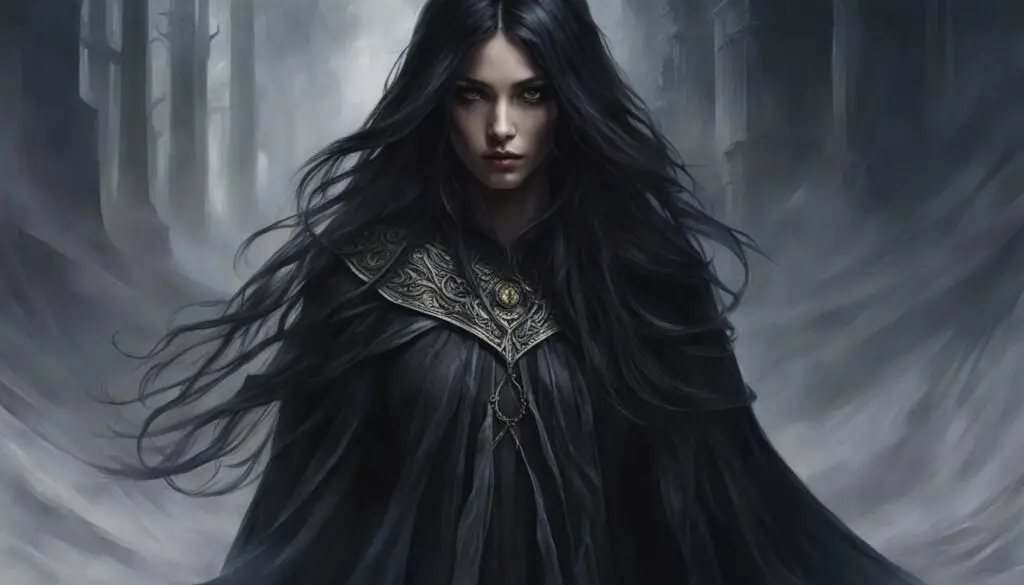
In Norse mythology, Hel is depicted as a fascinating and enigmatic figure. Her appearance is described as strikingly unique and symbolic of her dual nature.
Hel is often portrayed as a terrifying hag, with one side of her body decaying and the other side youthful and beautiful. This stark contrast showcases the juxtaposition of life and death within her very being.
Despite her fearsome appearance, Hel is not inherently evil. She possesses a cold and detached demeanor, carrying out her duties as the ruler of the underworld with unwavering resolve and without emotion.
Her unique appearance and elusive personality make her an intriguing character in Norse mythology, embodying the complex nature of life, death, and the afterlife.
Hel’s Powers and Abilities

As the goddess of death in Norse mythology, Hel possesses formidable powers and abilities that grant her control over the realm of the dead. Let’s explore some of her awe-inspiring capabilities:
- Control Over Corpses, Skeletons, and Spirits: Hel wields dominion over the deceased, commanding corpses, skeletons, and spirits within her realm. She has the ability to summon and manipulate these entities to fulfill her bidding.
- Manipulation of Death Forces: Hel possesses the power to manipulate death forces, including disease and aging. She can unleash illnesses and accelerate the decay of living beings, ensuring their eventual arrival in her realm.
Within the vast and chilling realm of Helheim, where Hel reigns supreme, she enjoys the following vast resources:
- Grand Mansions, High Walls, and Immense Gates: Helheim, the underworld ruled by Hel, is home to grand mansions adorned with eerie grandeur. The high walls and immense gates of this realm create an imposing presence that sets it apart from the mortal world.
- Various Tools and Servants: To aid her in her duties, Hel possesses an array of tools and servants within Helheim. These entities assist her in the smooth management of the realm, ensuring the orderly transition of souls between the worlds of the living and the dead.
Hel’s powers and abilities highlight her exceptional command over death and the afterlife. They serve as a testament to her significance within Norse mythology and the fear that her name evoked among the ancient Norse people.
Hel’s Role in Norse Mythology
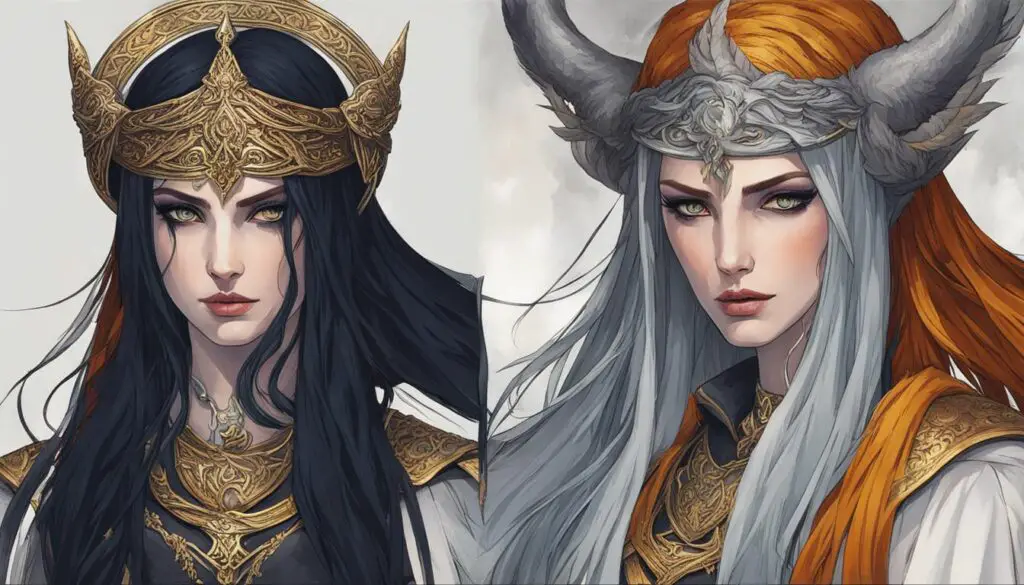
Hel, the ancient goddess of death and ruler of the underworld, plays a significant role in Norse mythology, particularly in the story of Baldr’s death. When Baldr, the beloved god of light, is tragically killed, he is sent to Hel’s realm. Desperate to bring him back, Baldr’s father Odin sends Hermod, the brave messenger of the gods, to plead with Hel for Baldr’s release.
Hermod ventures to Helheim, the cold and shadowy realm ruled by Hel. He implores Hel to allow Baldr to return to the land of the living, but she agrees on one condition. Hel demands that all things weep for Baldr, as a testament to his importance and the grief felt by all. If every creature sheds a tear, Hel promises to release Baldr from her grasp.
However, not every being mourns Baldr’s loss. One giantess named Thok refuses to shed a tear, preventing Baldr’s return from Hel’s realm. As a result, Baldr remains in Helheim, bound by Hel’s power until the cataclysmic event known as Ragnarök.
Hel and Ragnarök
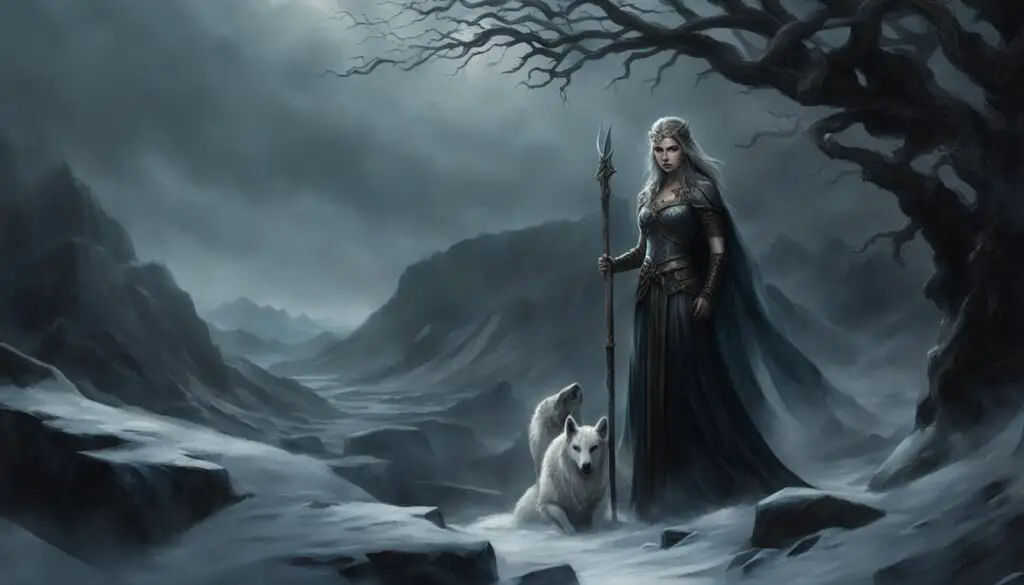
In the apocalyptic event of Ragnarök, Hel, the goddess of death in Norse mythology, is predicted to play a significant role alongside her father, Loki. As the ruler of the underworld, Hel leads an army of dishonorable dead to join Loki’s cause against the Aesir gods.
While her exact fate in the final battle is not recorded, Hel’s participation represents her loyalty and desire for vengeance against the gods who banished her and her family. In Norse mythos, Hel’s role in Ragnarök showcases her power and influence as a key player in the impending cataclysmic battle.
Hel in Norse Mythology and Marvel
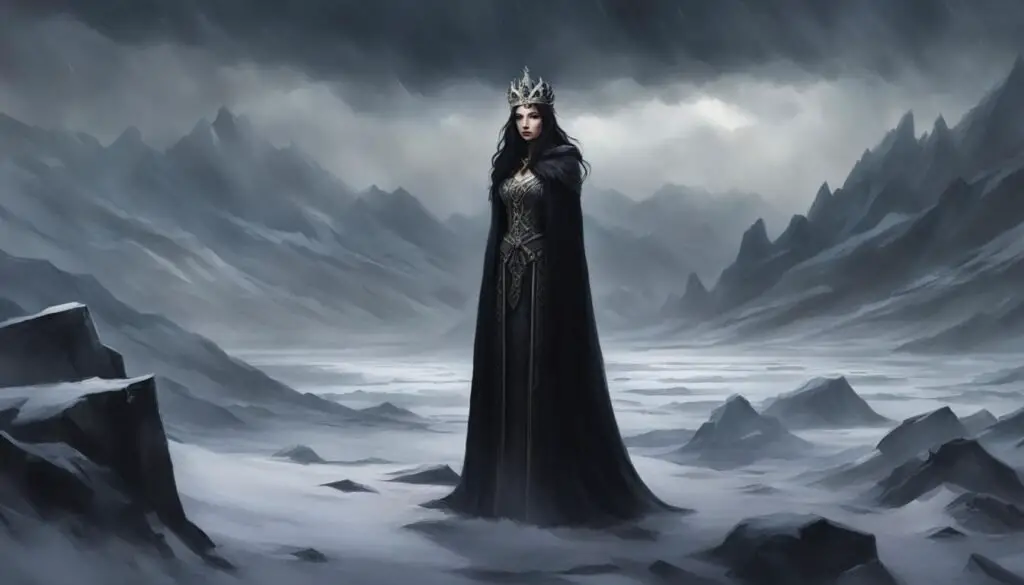
The portrayal of Hel in Marvel comics and movies takes some creative liberties. In Norse mythology, Hel is the daughter of Loki, not Odin, and her role is not as prominent in Ragnarök as portrayed in Marvel. However, both representations depict Hel as a powerful and complex character.
Marvel’s depiction of Hel showcases her as a formidable goddess, emphasizing her role as the ruler of the underworld. The comics and movies often highlight her connection to death, darkness, and the afterlife. While Marvel’s version may deviate from the original mythological accounts, it effectively showcases Hel’s intriguing and captivating nature.
Hel’s character in Marvel provides a fresh perspective on Norse mythology, allowing for a deeper exploration of her powers and personality. Marvel’s adaptation captivates audiences by portraying Hel as a complex figure who straddles the line between good and evil, just as she does in Norse mythology.
Hel’s Realm – Helheim
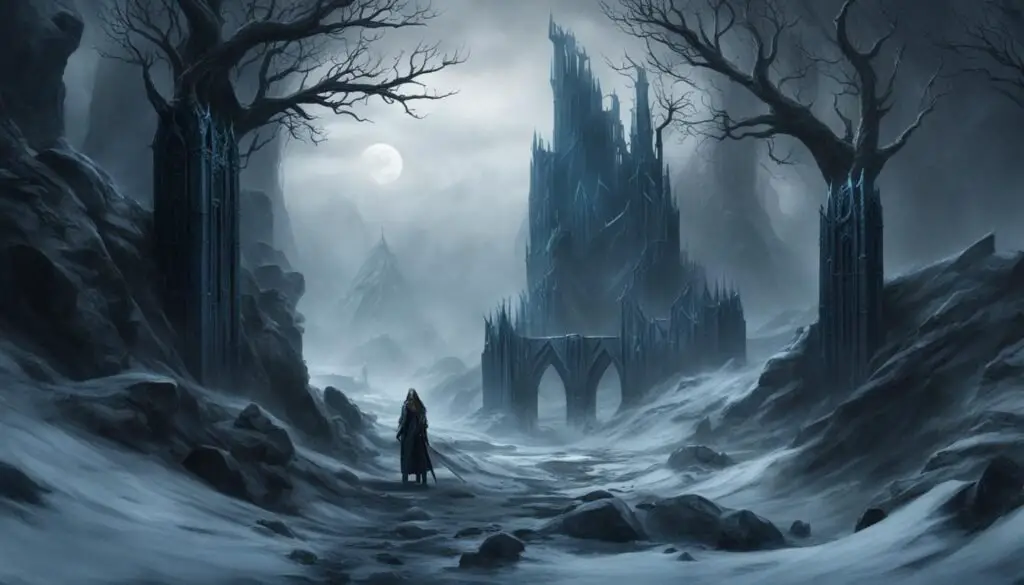
In Norse mythology, Helheim is the realm ruled by Hel, the goddess of death. Also known as the underworld, Helheim is a cold and shadowy place where the souls of those who died outside of battle reside.
In Helheim, the atmosphere is gloomy and haunting, with grand halls that echo with sorrow. The walls are towering and foreboding, casting long shadows over the desolate landscape. Immense gates guard the entrance, highlighting the separation between the world of the living and the domain of the dead.
As the ruler of Helheim, Hel possesses the authority to determine the fate of the deceased. The realm serves as a place of punishment for those who have done wrong in life, a reflection of the Nordic belief in justice beyond death.
Helheim stands as a reminder of the consequences of one’s actions and the eternal nature of existence. It symbolizes the cycle of life and death, a stark reminder of the inevitability of mortality.
Conclusion
In Norse mythology, Hel is a fascinating and multifaceted figure that holds a prominent role in the realm of death and the afterlife. Despite her often terrifying portrayal, she is not inherently evil. Instead, she fulfills her duty as the ruler of the underworld with detachment and impartiality. Her presence in the apocalyptic event of Ragnarök further emphasizes her significance in Norse mythos.
Hel’s association with death and decay establishes her as a powerful and complex character. She oversees the souls of the deceased, making decisions about their fate and wielding control over corpses, spirits, and death forces. As the daughter of Loki and ruler of Helheim, her realm is a cold and shadowy place where those who died outside of battle find their final resting place.
While Marvel’s portrayal of Hel in comics and movies takes certain liberties, it still portrays her as a potent and multifaceted deity. In Norse mythology, she is closely linked to her father Loki and plays a loyal role in Ragnarök, leading an army of the dishonorable dead against the Aesir gods.
FAQ
Is Hel seen as a bad figure in Norse mythology?
No, Hel is not inherently evil. She carries out her duties as the ruler of the underworld with detachment, representing death and the afterlife.
What is Hel’s role in Norse mythology?
Hel is the ancient goddess of death and the underworld. She is responsible for receiving the souls of the dead and deciding their fate.
How is Hel portrayed in Norse mythology?
Hel is often depicted as a fearsome figure, associated with darkness, disease, and despair. Her appearance is described as half black and half flesh-colored, with one side decaying and the other side youthful and beautiful.
What powers does Hel possess?
As the goddess of death, Hel has control over corpses, skeletons, and spirits. She can manipulate death forces such as disease and aging.
What is Hel’s significance in the story of Baldr?
When Baldr is killed, he is sent to Hel’s realm. His father Odin sends Hermod to plea for Baldr’s release, but Hel agrees only if all things weep for him. Baldr remains in Hel’s realm until Ragnarök.
How does Hel participate in Ragnarök?
Hel is predicted to join her father Loki in the apocalyptic event of Ragnarök. She leads an army of dishonorable dead against the Aesir gods, representing her loyalty and desire for vengeance.
How does the portrayal of Hel in Marvel differ from Norse mythology?
In Norse mythology, Hel is the daughter of Loki and has a lesser role in Ragnarök. However, both portrayals depict Hel as a powerful and complex character.
What is Helheim?
Helheim is the realm ruled by Hel, known as the underworld in Norse mythology. It is a cold and shadowy place where the souls of those who died outside of battle reside.
What is the overall significance of Hel in Norse mythology?
Hel’s role as the goddess of death and the afterlife, her association with Ragnarök, and her portrayal in popular culture make her a significant figure in Norse mythology.


